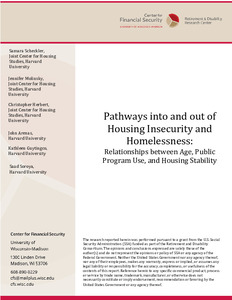Subscribe to keep up to date with the latest research, resources, news and events from The Deck.
You can also sign up to Q Shelter’s monthly newsletter, Home Matters.

Samara Scheckler, Jennifer Molinsky, Christopher Herbert, John Arenas, Kathleen Guytingco, Saad Soroya
Adults 65 and older are the fastest growing age group of people experiencing homelessness, yet housing insecurity and homelessness is especially dangerous for them. This project uses a mixed methods approach, including a review of the literature, an analysis of Homelessness Management Information System (HMIS) data for the Commonwealth of Massachusetts, and interviews with service providers around Boston, to understand the distinct, age-related needs of older adults who utilize the homelessness service system.
We find that adults 50 and older, who comprise about a third of the Massachusetts residents experiencing homelessness, are particularly vulnerable to housing insecurity that results from age-related changes. These changes can include a deterioration in financial resources, social networks, and health and abilities, all of which complicate their capacity to maintain existing housing or navigate benefits systems. Benefits use of older adults also diverge by race and ethnicity, with lower SSDI utilization among Black, Hispanic, and Asian individuals, compared to White or Indigenous people 50 and older experiencing homelessness.
This raises concerns about disparities in benefits access. Programs might improve housing security for older adults and increase equity by acknowledging the unique needs of older adults and constructing administrative processes that better align with these needs. Broadly, this would include increasing access to affordable housing, subsidy and home modification programs, streamlining and coordinating application processes, and providing better service continuity to address changes as they arise and prevent significant disruptions to benefits, services, or housing that can result from age related life or health changes.